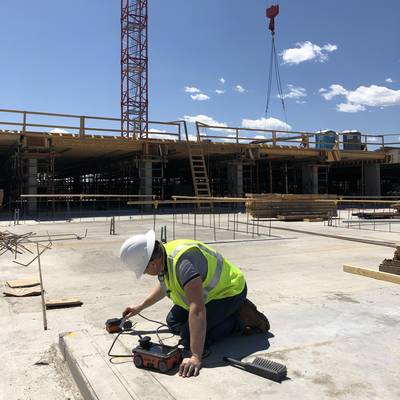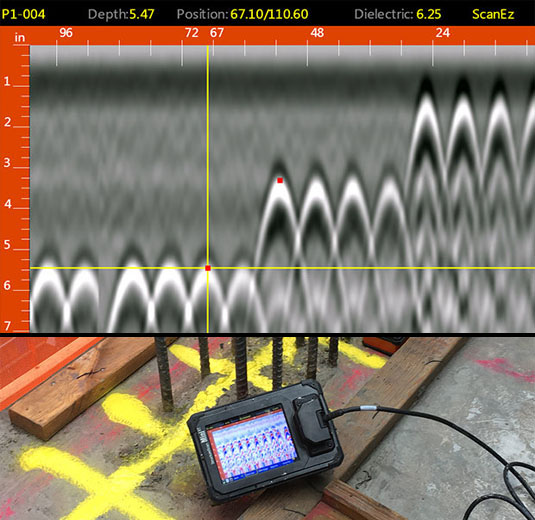Key Benefits of Using Concrete Scanning Modern Technology
Key Benefits of Using Concrete Scanning Modern Technology
Blog Article
Past the Surface: Leveraging Advanced Concrete Scanning Techniques for Unmatched Precision and Insight
In the realm of building and construction and facilities upkeep, the mission for precision and thoroughness is never-ending. Advanced concrete scanning techniques have actually emerged as important tools in this quest, offering a look under the surface to unveil a world of essential understandings. By taking advantage of advanced technologies, specialists can reveal abnormalities, examine the condition of concrete structures, and make notified choices that shape the program of tasks. The implications of these strategies extend far beyond simple surface-level assessments, assuring a deepness of accuracy and understanding that is unequaled.
Significance of Advanced Concrete Scanning
The relevance of utilizing innovative concrete scanning strategies hinges on the unrivaled precision they use for identifying sub-surface abnormalities and making sure structural honesty. By using innovative technologies such as ground-penetrating radar (GPR), electro-magnetic induction, and progressed finder imaging, building specialists can dig below the surface of concrete structures with a level of accuracy that far surpasses standard inspection methods. Concrete Scanning. These methods enable the identification of concealed threats like rebar corrosion, voids, conduits, or post-tension wires that might jeopardize the security and safety and security of a framework with time
Moreover, advanced concrete scanning provides important insights into the total condition of a concrete element without the demand for intrusive steps, minimizing the danger of creating damage during the analysis process. The ability to determine the precise place and deepness of potential concerns permits targeted repair services and maintenance, inevitably extending the life-span of the structure and optimizing its efficiency. Essentially, the importance of advanced concrete scanning can not be overemphasized in the world of building and framework maintenance, where precision and reliability are vital.
Kinds Of Cutting-Edge Technologies

Anomalies and Flaw Discovery

In addition to GPR, concrete scanning techniques like thermography and impact-echo screening are likewise efficient in detecting flaws and anomalies. By leveraging these innovative techniques, professionals can proactively attend to structural concerns, ensuring the durability and safety and security of concrete structures.
Assessing Concrete Condition
Exactly how can engineers properly examine the condition of concrete structures to ensure their long life and safety? Different advanced concrete scanning techniques are used for this objective. Ground-penetrating radar (GPR) is commonly used to examine the inner framework of concrete, detecting gaps, splits, and various other anomalies that may compromise its stamina.
Moreover, visual inspection remains a basic part of concrete condition evaluation. Designers visually examine the surface area for signs of degeneration, such as spalling, breaking, or discoloration. Integrating non-destructive screening approaches with aesthetic examinations permits an extensive assessment of concrete problem, enabling designers to determine prospective issues beforehand and apply prompt upkeep or repair work. By leveraging these sophisticated methods, designers can make sure the long-lasting durability and safety and security of concrete structures.
Enhancing Decision-Making Procedures
In the realm of facilities management, optimizing decision-making procedures is imperative for ensuring the effective maintenance and long life of concrete structures. Improved decision-making procedures in concrete management entail using innovative scanning strategies to collect thorough data on the problem of frameworks. By leveraging innovations such as ground-penetrating radar and 3D imaging, stakeholders can make informed decisions pertaining to substitute, reinforcement, or repair work approaches.
These progressed scanning strategies offer invaluable understandings right into the visit this site right here internal composition of concrete, recognizing possible problems such as gaps, fractures, or deterioration that look at this now might not show up on the surface. This level of detailed details enables for positive upkeep preparation, reducing the threat of architectural failures and enhancing the general lifespan of concrete frameworks.
Furthermore, by incorporating digital documents and evaluation tools into the decision-making process, stakeholders can track the advancement of concrete conditions in time, allowing anticipating maintenance methods and enhancing resource appropriation. Eventually, the integration of innovative concrete scanning methods improves decision-making processes by offering unparalleled accuracy, insight, and performance in framework management.
Final Thought
Finally, advanced concrete scanning techniques use unrivaled precision and understanding in detecting abnormalities, issues, and analyzing the condition of concrete frameworks. By leveraging sophisticated innovations, decision-making processes can be improved, leading to more reliable and informed remedies for keeping and fixing concrete infrastructure. These techniques play an essential duty in making sure the security and long life of concrete frameworks, making them a vital device in the area of construction and engineering.
Additionally, advanced concrete scanning offers very useful understandings right into the general condition of a concrete element without the demand for intrusive procedures, minimizing the risk of triggering damages during the evaluation process - Concrete Scanning. Another cutting-edge technology is 3D X-ray scanning, which provides in-depth pictures of the interior framework of concrete, offering valuable information without the need for harmful testing. Furthermore, Concrete Cover Meters are used to gauge the thickness of concrete cover over support bars properly. Improved decision-making procedures in concrete management include making use of advanced scanning strategies to gather comprehensive information on the condition of structures.In conclusion, advanced concrete scanning methods supply exceptional precision and understanding in identifying anomalies, flaws, and read the full info here analyzing the problem of concrete structures
Report this page